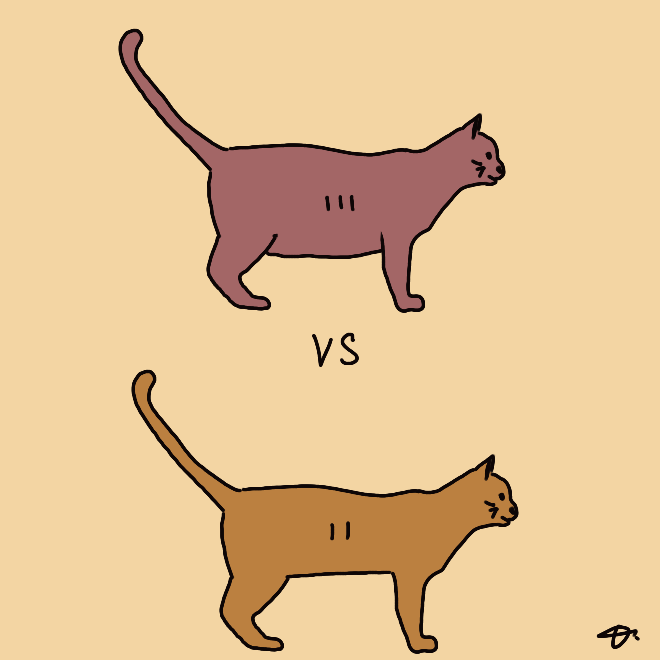
Did you notice your cat looking a little pudgier? Your cat could be overweight. Obesity in cats can be a real problem which can lead to many other health problems. Thus, as a loving owner, it is your job to make sure your feline is healthy!
Let’s begin with four physical ways to tell if your cat is overweight.
#1 Ribs
Run your hands along your cat’s side. If the ribs are easily felt along with a little covering of fat, your cat is healthy! However, if you cannot feel the ribs easily, it can be a sign that your cat is overweight.
#2 Abdomen
If you see a layer of low hanging fat on your cat’s side, it could be a sign that your cat is overweight.
#3 Spine
Run your hands down your cat’s back, can you feel the bones below a layer of fat? If not, your cat is overweight.
#4 Waist
Look at your cat from the top, can you see their waist? There should be a space between their ribs and hips protrudes. If not, your cat is overweight.
So, if your cat checks most or all of the boxes. What should you do? Here are some ways to help your cat lose weight.
#1 Control Food Intake
When putting your cat on a diet, you must be extremely careful. Drastically cutting back on the amount of food can be dangerous to your cat’s heath.
According to an article from Pet Health Network, for a fat cat to not eat for a few days can cause serious liver issues. Therefore, it is safer for your cat to gradually lose weight. You can start by feeding her weight control cat food.
If your cat is very obese, prescribed therapeutic weight loss food may be recommended by the vet. It would be best to discuss your cat’s needs with the vet before placing her on any kind of diet.
#2 Take Your Cat to the Vet
As mentioned from the previous point, it is best to bring your cat to the vet. The vet will come up with the best weight loss regimen for your cat. Furthermore, they will also identify any underlying issues that your cat might have.
#3 Increase Her Activity Level
Cats are not programmed to go out for a walk like dogs. Hence, it is not easy to get cats to exercise. The good news is that cats do not need much exercise to stay healthy.
Cat Behaviour Associates recommends two fifteen-minute sessions of interactive play everyday. You should engage her in activities such as chasing or leaping after her favourite teasers or other toys.
Investing in an indoor cat tree would increase the opportunity for your cat to climb and jump. Play time with a cat tree combined with the two sessions, you are basically providing your kitty a home gym!































